Book: ’Food on the Move’ - motorways and meals
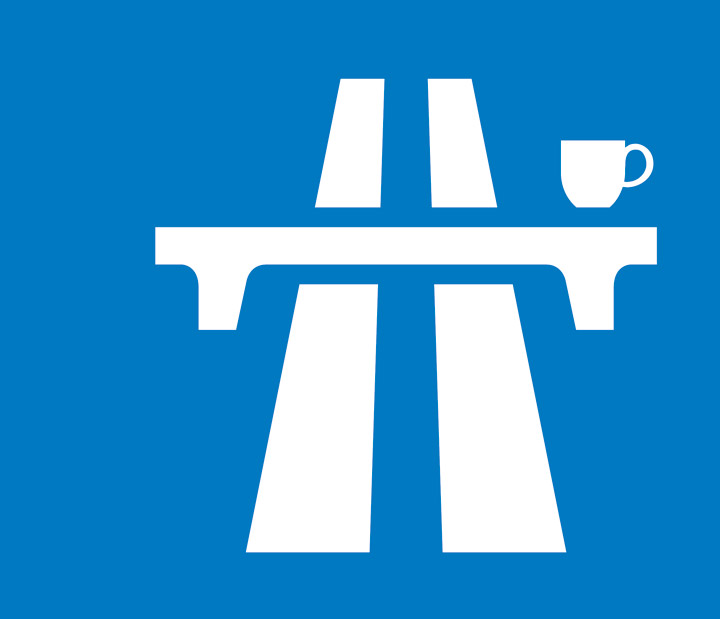
'Food on the Move: The Extraordinary World of the motorway service area' is a new monograph with a highly-focused subject matter: the glorious heyday of the British motorway service station. Here was a typology as fresh and dynamic as the chrome-bumpered machines that ploughed up and down the country's newly-minted stretches of highway - fast food for fast people. The glory days didn't last, of course. David Lawrence's book is a labour of love, a piece of intense research that fuses design and social history with a rare passion for his subject matter.
The original motorway rest stops were certainly deserved of this adulation. Much-heralded British modernist Patrick Gwynne was an aficionado of service station design, and even Archigram pitched in with some ideas, while an abandoned scheme by Richard Rogers is also illustrated. As a young mobile population started to shift around the country, these strange spaces took on their own mythologies, partly thanks to the restless travelling of the early rock bands, as well as the romantic ennui of being so modern and yet so apart from traditional spaces of modernity. A strange kind of sexuality emerged - part JG Ballard, part Arthur Hailey.
In Europe and the US the romance has lingered on, perhaps. In the UK, the great sadness is that attention to detail evaporated, as costs were cut and the original chic lost out to lowest-common-denominator design. The service station became a byword for comestible tat, another nail in the coffin of the reputation of British cuisine. There's more to it than that - the lost visual glories, the design, architecture and typography, all belong to a more confident era, unencumbered by the hollow stamp of 'branding' and the clipped-together monotony of system building.
Nostalgia is a curious thing, especially in the realm of architecture and the built environment. Places change and good intentions evaporate, but short of coating every scintillating structure in a thick layer of protective aspic, we simply have to accept that even good design gets lost in time. While continental designs still retained their aura - perhaps by virtue of being foreign - Britain plunged headlong into the prosaic. The service station became an archetype that never quite hauled itself into the modern age, despite being at the cutting edge of commercial architecture in its all-too-brief heyday. Alain de Botton pitches in an essay on 'Loneliness and Little Chefs' and there are plenty of other psychogeographical insights.
Lawrence has spent years expanding his earlier study on the subject, finding new imagery and new angles. His book is a true labour of love, a slice of esoteric history of the kind that should survive the digital era's drive to standardise the size, shape, form and content of our reading matter.
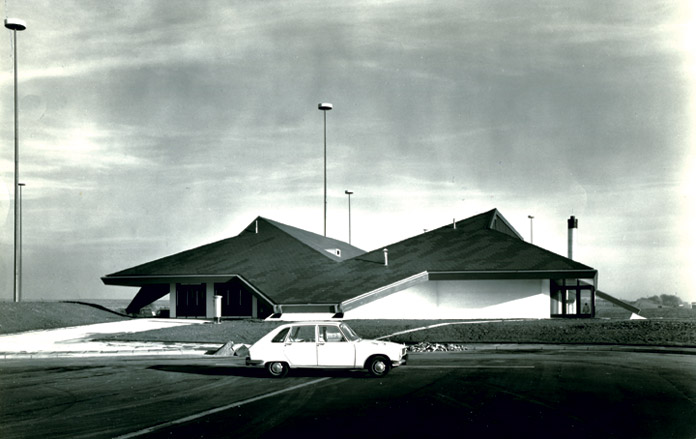
Birch Services on the M62. Modest but powerful.

Mid 50s filling station, German Autobahn. Streamlined and minimalist, perfect for the speed limit free highway.

Aust Services on the M4, adjacent to the Severn Bridge...

... Pop murals and picnic areas, with mighty engineering as the backdrop.
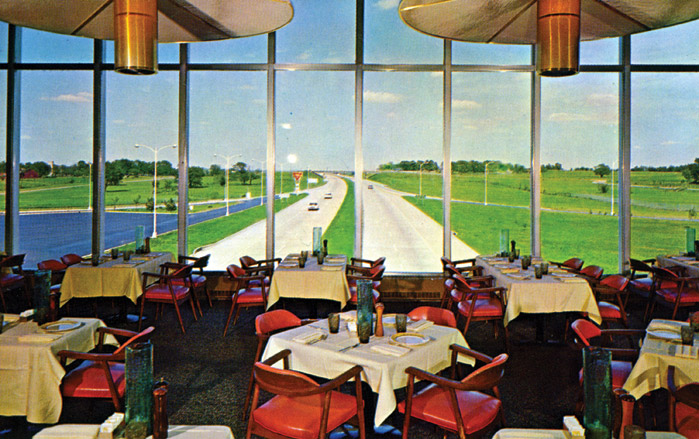
Vinita view from broiler room
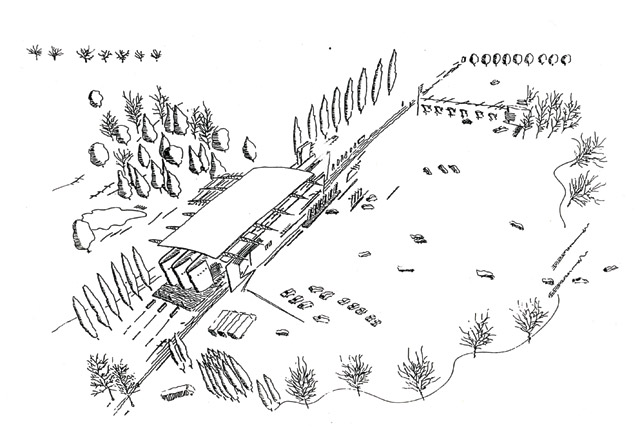
A Richard Rogers Partnership design from 1986 to improve the lot of Granada Service stations. Sadly unrealised.

Photographer Hannah Starkey's 'Untitled' from 1998. Ennui on the road.
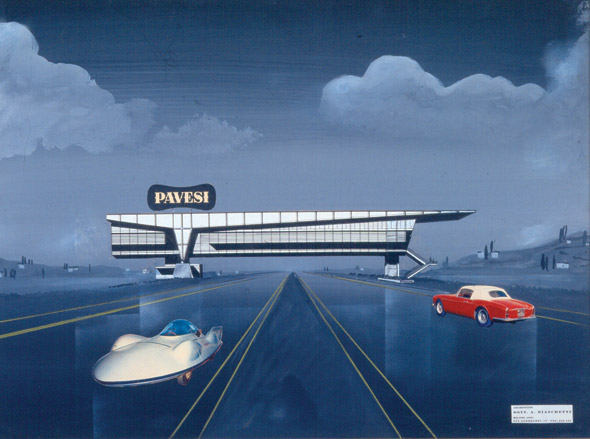
Angelo Bianchetti's futuristic design for a Pavesi rest stop on the A1 Autostrada at Montepulciano

'Girl on the M6,' a thriller by Douglas Enefer from 1973.
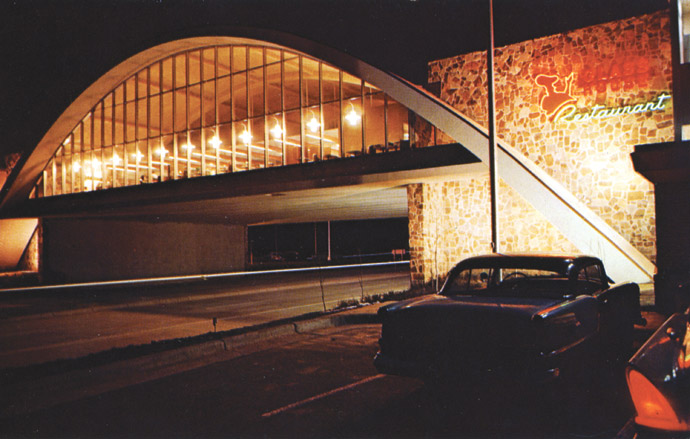
The Vinita service area by night, Oklahoma, 1958. A heroic parabolic arch that spanned the highway it served (Interstate Route 44) and recalled the very best of modernist design.
Receive our daily digest of inspiration, escapism and design stories from around the world direct to your inbox.
Jonathan Bell has written for Wallpaper* magazine since 1999, covering everything from architecture and transport design to books, tech and graphic design. He is now the magazine’s Transport and Technology Editor. Jonathan has written and edited 15 books, including Concept Car Design, 21st Century House, and The New Modern House. He is also the host of Wallpaper’s first podcast.
-
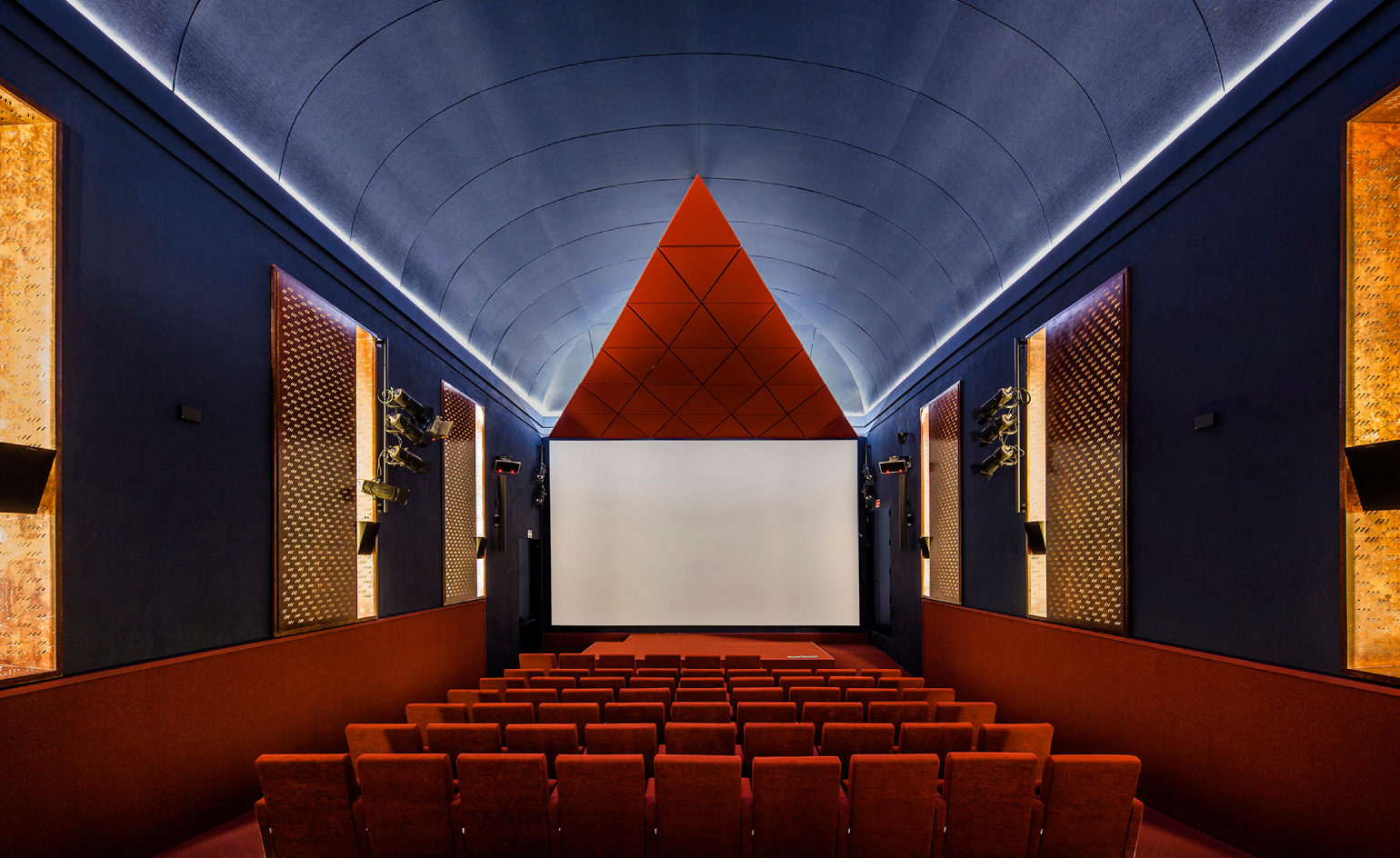 A striking new cinema glows inside Madrid’s Reina Sofia Museum
A striking new cinema glows inside Madrid’s Reina Sofia MuseumBarcelona-based studio Bach reimagines a historic auditorium as a crimson-and-blue dreamscape
-
 How an Austin home went from 'Texan Tuscan' to a lush, layered escape inspired by the Alhambra
How an Austin home went from 'Texan Tuscan' to a lush, layered escape inspired by the AlhambraThe intellectually curious owners of this Texas home commissioned an eclectic interior – a true ‘cabinet of curiosities’ layered with trinkets and curios
-
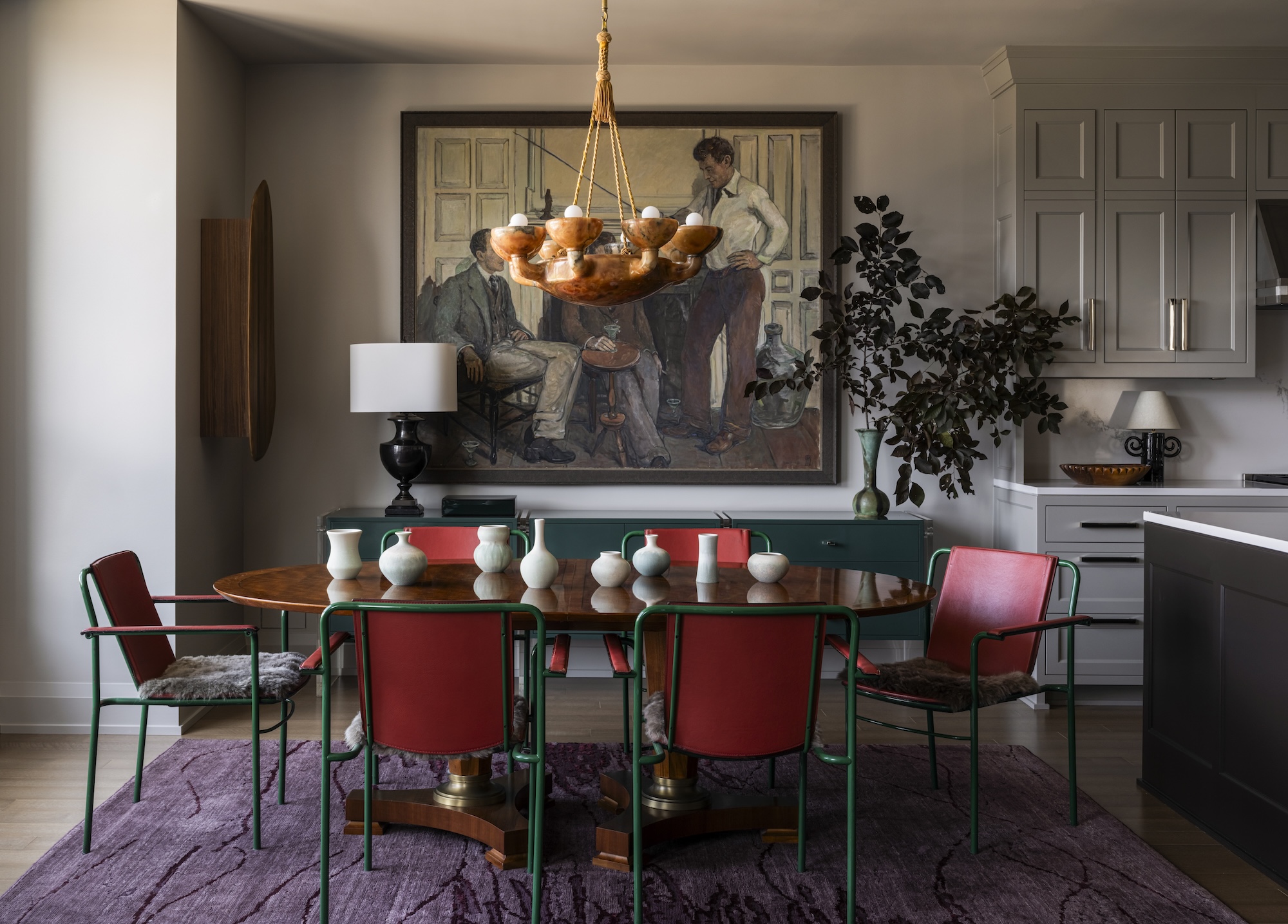 Should your home have a patron goddess? This dramatic Minneapolis apartment does
Should your home have a patron goddess? This dramatic Minneapolis apartment doesInspired by the Celtic deity Brigid, interior designer Victoria Sass infused this Twin Cities aerie with flame-licked themes
-
 How to be a crisp sommelier: Neil Ridley on ‘bringing fun back into food and drink’
How to be a crisp sommelier: Neil Ridley on ‘bringing fun back into food and drink’The humble crisp is an easy crowd-pleaser for laidback hosts. Drinks expert Neil Ridley shares his tips for creating the perfect crisp-and-drink pairings, whatever the occasion
-
 'Moroseta Kitchen' is a new recipe book offering a glimpse into the Puglian countryside
'Moroseta Kitchen' is a new recipe book offering a glimpse into the Puglian countryside'Moroseta Kitchen - A Window Into The Puglian Countryside' by Giorgia Eugenia Goggi is based on the essence of eating in Italy, rooted in farm to table seasonal recipes
-
 ‘Bethlehem’ is a new recipe book celebrating Palestinian food
‘Bethlehem’ is a new recipe book celebrating Palestinian food‘Bethlehem: A Celebration of Palestinian Food’ is a recipe book by Fadi Kattan that celebrates culinary tradition and explores untold stories
-
 René Redzepi, Mette Søberg and Junichi Takahashi on Noma’s new cookbook
René Redzepi, Mette Søberg and Junichi Takahashi on Noma’s new cookbookLifting the lid on Noma’s secrets, a new cookbook celebrates the pioneering restaurant’s season menus, and offers a deep dive behind the scenes
-
 60-Second Cocktails book shakes up summer happy hour at home
60-Second Cocktails book shakes up summer happy hour at homeThis 60-Second Cocktails book brings summer happy hour into your home with easy but sophisticated cocktail recipes and tips to guide even novice shakers
-
 New cookbook transforms horror movies into terrifying food art
New cookbook transforms horror movies into terrifying food artHorror Caviar, the first cookbook from A24, features recipes inspired by horror movies, from creatives including Laila Gohar and Chloe Wise, alongside essays by Carmen Maria Machado, Stephanie LaCava, and more
-
 Edible flowers: the how, the what and the why
Edible flowers: the how, the what and the whyA new book from Monacelli, Edible Flowers: How, Why, and When We Eat Flowers, uncovers a fascinating history
-
 Match point: learn how to properly pair food and wine
Match point: learn how to properly pair food and wineLearn a thing or two about fine cooking and wine selection with this new book from the London Club